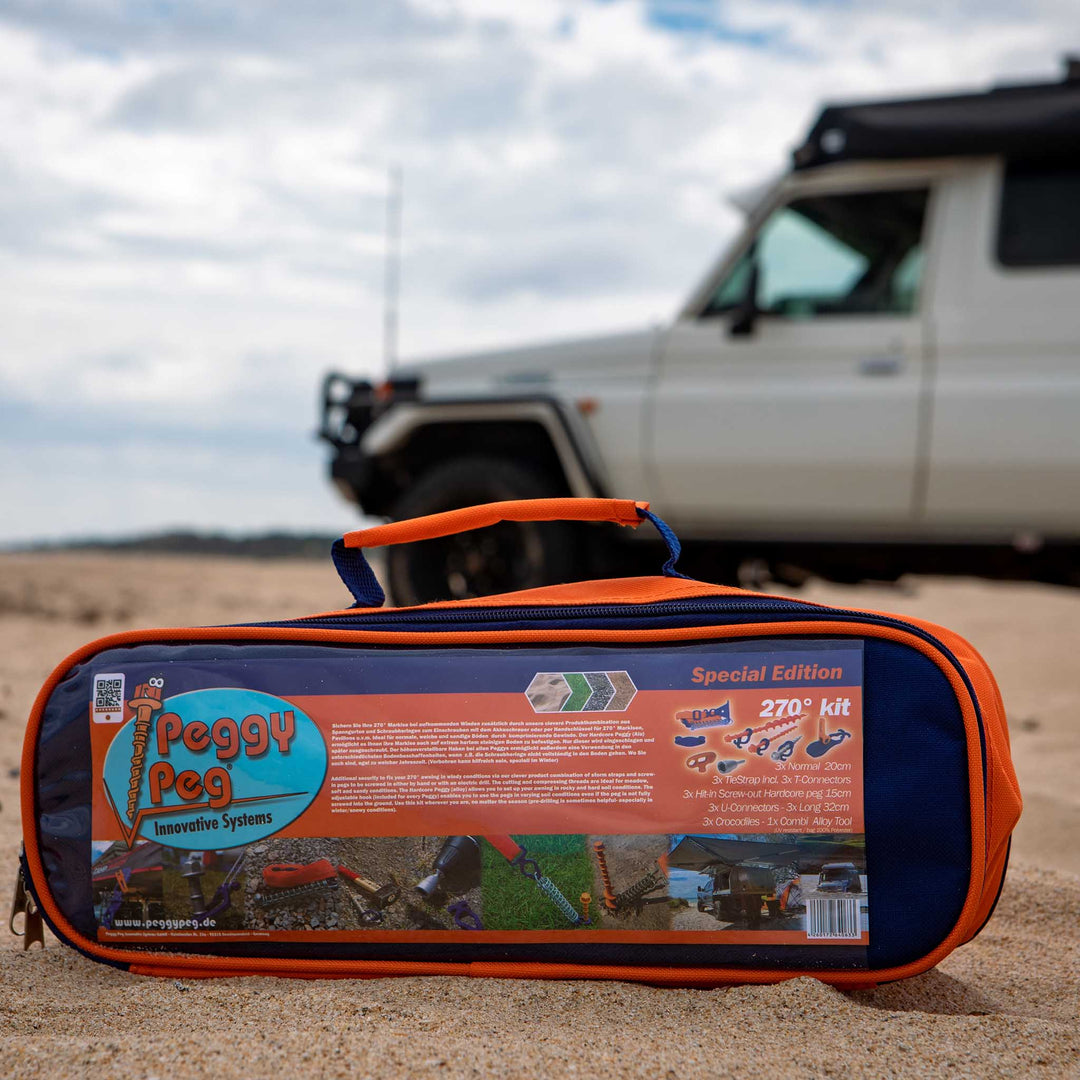Where in the World: With the camper to Meteora

Where in the world is Peggy Peg? - Meteora
Travel blog - The travels of Marcus and his family continues and so does his story:
I was unusual as a child. Many would say I’m unusual as an adult. The difference now being that I’m more than comfortable in my own skin. But back then it was different, or at least I was different. I didn’t dream of being a footballer, like all the other kids in my class, I had no grand designs on becoming a doctor, or lawyer, or vet or any of the other professions parents think would be suitable for their beloved little ones. No, I wanted to be an aeronaut and fly around the world.
I would spend hours poring over back-dated travel magazines, the old tattered copies of National Geographic being the only thing I enjoyed about going to the dentists. The pictures in those magazines, from far away exotic lands, were like portals into different worlds to me, ones I would imagine flying over in my balloon. Me, the great explorer discovering new horizons, returning only to share stories of wild adventures with people back home.
Amongst all of the many pictures that I saw there was one that stayed with me, of a scene that, if you were to see it now for the first time, you might assume it was the work of a CGI wizard. Only back then, at a time when the Discman was about as technological as it got, there was no doubt the picture was real. The huge columns of sandstone jutting up into the air amongst a sea of green below, the sky such a deep shade of purple it looked as if a witch had spilt her cauldron.
The place was Meteora in Greece, although the name made it sound like it was from a different planet. It took me a few tries to get the pronunciation, but once I did it was etched into my mind, never to leave me. And now here I was, standing precariously close to the edge of one of those very rock pillars, looking down on the exact view that had looked up at me from the pages of the magazine all those years ago.

Admittedly I hadn’t flown here in a balloon, and I doubt there will be too many people queuing up to hear about my stories when (or maybe that should be if) I return to the UK, but those were just minor details. Details that faded away as the sun slowly began its long arcing ascension into the sky, pools of burnt orange spilling across the horizon, mixing with the verdant greens of the valley below, bringing life to the day and a sense of fulfilment to my heart.

Not everyone who visits Meteora is fortunate enough to see it like this, resplendent in a soft early morning light - the buses bringing tourists up to the monasteries that perch somewhat precariously atop of the sandstone pillars arrive once the light is washed out. But now, with the town below still rousing from its slumber, I felt as if I had the world to myself.
A world that threw up something different with every flicker of my eyes; a ribbon of road snaking its way through the lush forest far below, the snow-capped peaks of the Athamanian Mountains in the distance, tinged pink by the morning sun, a lone tree protruding from the top of a rock, the deep striations on the cliff faces, the terracotta roofs of the monasteries, each with its own distinctive features.
I knew the moment couldn’t last forever, and sure enough I soon began to hear the faint thrum of engines below as two coaches began their slow trudge up the mountain road, but the memories would.
Back on my bike and freewheeling back down the mountain to our motorhome I couldn’t help but think of the words of one of Greece’s greatest storytellers, Aesop, for it was he who said that ‘adventure is worthwhile’. As I grew from the little boy who wondered at the world in magazines, it would have been easy to not dare to leave the safety of home behind in order to seek out the places that once inspired me. But even when the road is not easy, the adventure it brings is always worthwhile.


Travel Advice
Where in the world: Meteora, Greece.
On the outskirts of the small town of Kalabaka you will find Meteora, home to six Greek Orthodox monasteries perched atop huge columns of rock. An otherworldly place that has to be seen to be believed.
How to get there: There are two main options for driving to Greece.
The first is to head to Brindisi in southern Italy where you can take a ferry (eight hour crossing time) to Igousmentsa. From here it is approximately a three hour drive to Meteora - which can easily be broken up with a stop in Ioannina. Alternatively, if you’re feeling more adventurous, why not head down through the Balkans to reach Greece. If you do go for this option then a ‘must visit’ along the way is Durmitor National Park in northern Montenegro.
Where to stay: There are three main campsites in Kalabaka, with each having its pros and cons. Our preference was The Cave, set outside of town and on the road up to the monasteries this is a more rustic option with grass pitches set in a field next to a small hotel. It offers hot showers, fresh water and grey and back waste emptying, as well as the best views of the mesmerising rock formations that the region is known for.
In our last blog post from Marcus he is answering the question he is being asked the most: 'Why do we travel?'
Read about Marcus' journey and his inspiration to travel here.








